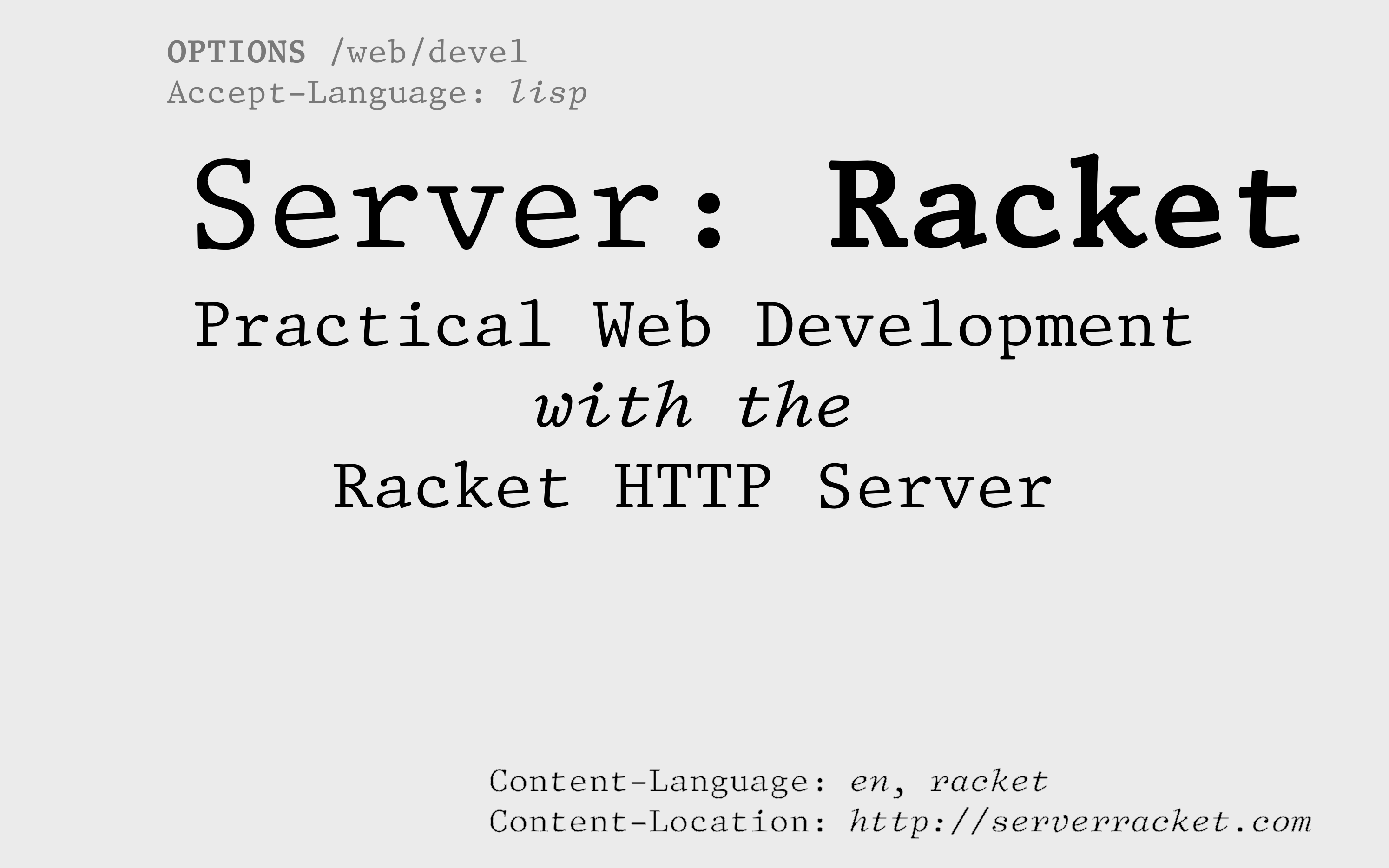Enter Server: Racket

Server: Racket is an ebook all about real-world web development with the Racket’s built-in HTTP server.
We will tackle the battery of problems faced by web developers who want to hack the web in Racket. You’ll find out how to solve problems that the official Racket documentation doesn’t talk about. (Not in detail, anyway, and not in any full-length tutorial way).
In 184 pages, we’ll dig in to these web development topics and see how to deal with them in Racket:
Part 1: HTTP à la Racket
Working with HTTP requests and responses entirely within Racket: no external systems, and using only modules that come standard with Racket.
- The servlet: In the beginning there was
request? → response? - Routes: URL-based dispatching
- Logging
- Working with JSON data
- HTML templates
- Processing HTML forms
- Handling AJAX requests
- Cookies
- Testing
Part 2: Interacting with other systems
Where we begin to connect to specialized systems running outside of Racket and use specialized packages that aren’t included in a standard Racket installation.
- Using a relational database (
db,sql) - Session management (
redis) - Environment variables (
dotenv) - JSON Schema validation (
argo) - Models (ORM) (
racquel) - Sending HTTP requests (
http) - Caching (
memcached) - Database migrations with Phinx
- Racket & Docker
- A CRUD-style HTTP API
- Deploying a Racket-powered site behind a proxy
The ebook is in PDF format, with Racket starter code—fully-functioning mini-sites—illustrating how these topics can be tackled with Racket, for nearly every chapter.